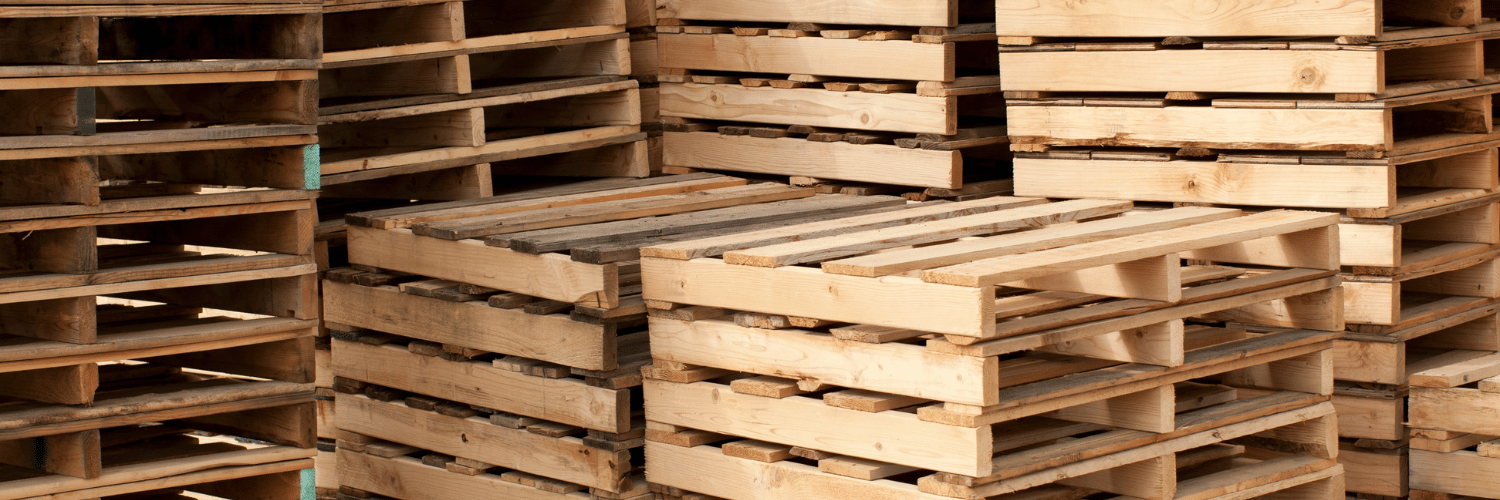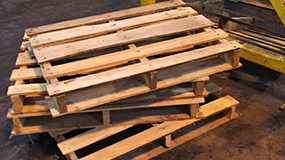What is the Journey of a Pallet?
Pallets may not always grab the spotlight, but they are one of the unsung heroes of the global supply chain. These versatile wooden platforms are used for storing and transporting goods across the world. While the importance of pallets is often overlooked, their role in industries ranging from manufacturing to retail is absolutely essential. In this blog, we will explore why pallets are needed, how they are made, and what happens to them once they can no longer be repaired or reused.
Why Are Pallets Essential?
Pallets serve as the foundation for goods during transportation, storage, and handling. Here’s a closer look at the reasons behind their indispensable role in the supply chain:
- Efficiency in Handling and Transport
Without pallets, moving heavy or bulky items would be far more labor-intensive and time-consuming. Pallets standardize the way goods are handled, enabling forklifts, pallet jacks, and other machinery to quickly lift and move entire stacks of products. This significantly reduces labor costs and speeds up the process of loading, unloading, and storing. - Maximizing Storage Space
Pallets allow products to be stacked more efficiently, saving space in warehouses, shipping containers, and trucks. With the right configuration, they can maximize the use of vertical space, making them a key tool in optimizing warehouse capacity and reducing storage costs. - Protection of Goods
Pallets keep goods off the ground, protecting them from moisture, dirt, and potential damage. This is particularly important for perishable or fragile items. The elevated nature of pallets also allows air to circulate around products, reducing the risk of spoilage and preserving product quality. - Standardization and Global Compatibility
Pallets come in standardized sizes, which means they can be easily stacked and transported in containers and trucks. The International Organization for Standardization (ISO) and other regional bodies have established standard pallet sizes (e.g., the 48” x 40” pallet in North America). This uniformity simplifies international trade and logistics, ensuring products can be easily moved across borders without the need for repackaging or additional handling. - Reusability and Sustainability
Many pallets are made from wood, which is a renewable resource. Moreover, pallets can be reused multiple times, providing significant environmental benefits. For example, wooden pallets are often refurbished and repaired to extend their lifespan, which makes them a more sustainable option compared to one-time-use packaging materials.
How Are Pallets Made?
Pallets come in several different materials, but the most common ones are wood, plastic, and metal. Here’s a closer look at how wooden pallets, the most prevalent type, are made:
- Material Selection
The first step in making a wooden pallet is choosing the right wood. Softwoods like pine, fir, and spruce are often used because they are abundant, affordable, and relatively lightweight. These woods are also easy to work with, which is essential for mass production. - Cutting and Shaping
Once the wood is selected, it is cut into planks, boards, and stringers (the long supporting pieces that form the pallet’s structure). The dimensions of the planks and stringers are carefully calculated to meet the required pallet size and ensure the pallet is durable enough to carry heavy loads. - Assembly
After the pieces are cut, they are assembled into a pallet. The stringers are attached to the boards using nails or screws, forming the base structure of the pallet. In some cases, metal fasteners or corner blocks may be used for additional reinforcement. - Treatment and Finishing
For wooden pallets to meet international shipping regulations, they must often undergo heat treatment to prevent the spread of pests. This process is particularly important for pallets used over seas. After treatment, pallets are often inspected for quality to ensure they meet safety standards. - Testing and Quality Control
Quality control is crucial in pallet manufacturing to ensure the pallets are safe and reliable. This may involve weight tests, load tests, and visual inspections. A poorly made pallet could break during transit, resulting in damaged goods or even injuries to warehouse workers.
What Happens to Pallets When They Can No Longer Be Repaired and Reused?
Pallets, like all things, have a finite lifespan. After being reused multiple times, or after suffering damage that cannot be repaired, they must eventually be disposed of. Here are the key options for handling these pallets:
- Recycling
One of the most sustainable ways to handle old pallets is through recycling. Wood pallets that are no longer usable can be broken down into wood chips, mulch, or sawdust. This material can be used in landscaping or as a raw material for other products, such as engineered wood or particle board. - Repurposing
Even when a pallet is no longer suitable for transport, it can often find a second life in a different form. For instance, old pallets are commonly repurposed into furniture, home decor, or garden planters. This type of creative reuse has become a popular trend, contributing to both sustainability and creativity. - Pallet Recovery Programs
There are also specialized programs that focus on recovering and recycling pallets. These programs ensure that the pallets are reused as much as possible before they are finally discarded.
Conclusion: The Lifelong Journey of Pallets
From their creation to their eventual disposal, pallets have an enduring impact on modern logistics, contributing significantly to the efficiency, safety, and sustainability of global trade. Whether used for a few months or several years, pallets continue to play an essential role in moving goods around the world. And when they can no longer be used, their materials are often recycled or repurposed, ensuring that their environmental footprint is minimized.
Understanding the life cycle of a pallet is essential—from its manufacturing to its end-of-life—is a reminder of how seemingly simple tools can have a lasting effect on industries and the environment. So, the next time you encounter a pallet, remember that it’s not just a platform for goods, but an integral part of a much larger, more sustainable system.
Are you in need of our recycling service?
We’re here to help!


